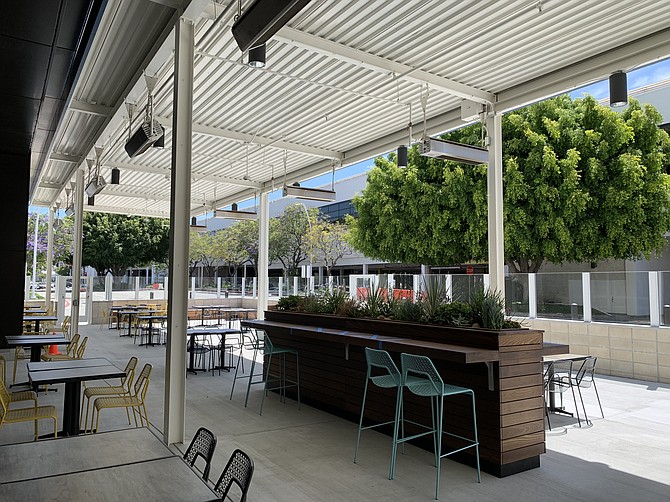As published in the Los Angeles Business Journal May 10, 2021
Demand for grocery store properties has soared during the pandemic, transforming the sector into one of the most sought-after real estate investment categories.
Although spending on dining out surpassed spending on groceries for the first time in 2015, that trend reversed when the Covid-19 pandemic set in last March.
Online grocery sales also surged in 2020, according to a report from Jones Lang LaSalle Inc. As more people ordered groceries from their computers and smartphones, digital grocery sales grew by 52%.
The in-store and online gains have boosted profits for grocery store chains. Albertsons Cos. Inc., for example, reported sales growth of 16.9% last year, while Kroger Co., which owns Ralph’s, reported sales growth of 14.1%, not including fuel.
“Retail was the poster child for commercial real estate being impacted by Covid-19 in that many of the uses were not permitted to operate early on during the pandemic,” said Jimmy Slusher, a vice president at CBRE Group Inc. “But grocery’s been essential, and pharmacies were still permitted to operate. They’ve seen a massive uptick in sales.”
That uptick has led grocery store properties and grocery-anchored shopping centers to become some of the most in-demand retail sites on the market.
“Because the grocery stores were all open and were doing a bang-up business, we saw that leasing in those centers was better than the unanchored centers. A lot of the grocery clients we have, their business went up at least 10% and in some cases 20% or 25%,” said Ken Shishido, a senior vice president at JLL.
Shishido added that traffic at grocery stores gave a boost to other stores at shopping centers with a grocery tenant.
Some grocery stores that were previously expected to close when their leases expired had strong enough sales during the pandemic that they were kept open.
Shishido expects some grocers to look at big-box vacancies to further expand because a lot of them need the larger floorplates these properties can offer.
‘Resilient subgroups’
Property owners are interested in grocery-anchored centers because of their high returns and safety.
“It’s really risk related. It’s stability related,” said Tom Lagos, an executive director at Institutional Property Advisors. “One of the most resilient subgroups in the retail world continues to be grocery- and drug-anchored shopping centers. They are drivers of a lot of people, and they bring in traffic to the shop tenants.”
He said grocery stores in Southern California see anywhere from 2,500 to 3,000 visitors a day.
Even before the pandemic, grocery-anchored centers were a favorite retail asset type among investors.
“For quite a long time now, grocery-anchored centers have been the product type of preference for institutional buyers. They’ve offered the most stability,” said Bill Bauman, a vice chairman at Newmark Group Inc.
That trend continued during Covid-19.
“The perception of the low-risk aspects of those assets was really confirmed during the pandemic. The grocery stores not only survived but thrived,” Bauman said.
Matt Mousavi, a managing principal at SRS Real Estate Partners, said he has multiple grocery-anchored investment deals on the market that are attracting extensive interest.
“Grocery-anchored centers, out of all retail properties, have the highest occupancy rates, so the shop tenants tend to do better when you’ve got a grocery tenant,” he said.
Mousavi added that it is easier to get financing for grocery-anchored centers.
Another reason investors like grocery centers is that grocery stores are often under a triple net lease, which means tenants can be responsible for everything from maintenance to taxes.
For owners, this means they can sit back and collect rent, and tenants don’t need to build a property or pay to own one.
Limited supply
Market experts agree that grocery stores and grocery-anchored centers will remain desirable, partially due to a lack of supply.
Mousavi called Southern California a “very, very supply-constrained market” with high barriers to entry.
“There’s very little land available,” he said. “You need 10 acres or more to build a grocery-anchored center. That drives value as well. There is less supply.”
Many investors hold onto their centers.
“In L.A., it’s few and far between that people want to sell their grocery-anchored shopping centers,” Lagos said.
Despite the lack of opportunities, experts say demand could increase.
“For grocery-anchored centers, the values are stronger today than they were pre-Covid,” Slusher said. “A lot of investors were shying away from retail during the first 12 months of the pandemic and over-allocating toward multifamily and industrial. … The yields have compressed so aggressively that retail … has actually become a higher-yield, more attractive option for those looking for a return.”
But there is one thing that could impact demand: taxes. Mousavi said that any tax code changes, along with rising inflation rates, could impact investment in real estate as a whole, including grocery stores.
